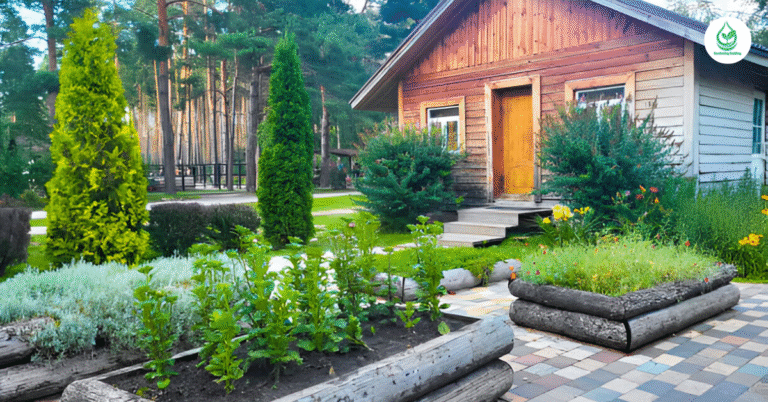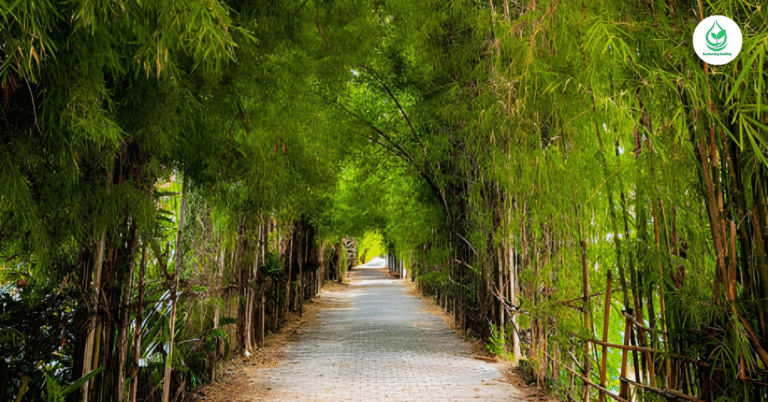6 Saguaro: The Majestic Icons of the Desert
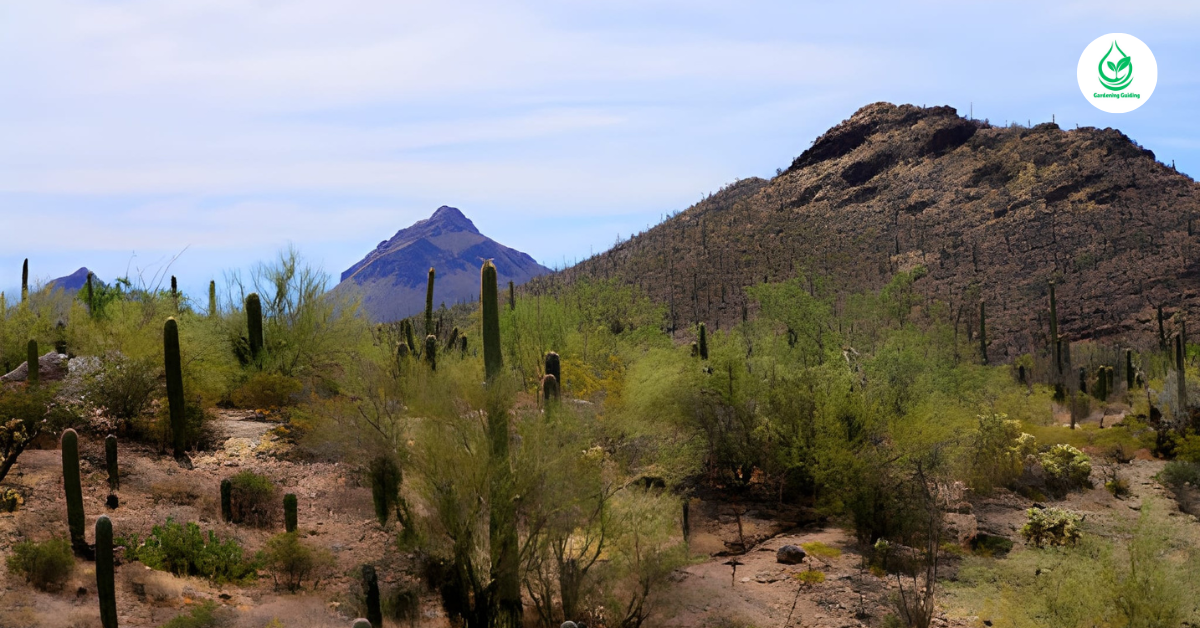
Introduction
Few plants symbolize the American Southwest quite like the Saguaro cactus. Towering high above the desert floor, the Saguaro is not just a plant—it’s a living monument of resilience, longevity, and natural beauty. Known scientifically as Carnegiea gigantea, these giants can live for over 150 years and reach up to 40 feet tall. In this guide, we’ll explore six fascinating aspects of the Saguaro—its growth, adaptations, cultural meaning, care tips, and how it stands as an ecological pillar in desert environments. Whether you’re a plant enthusiast, a gardener, or simply fascinated by desert life, these insights will help you appreciate the Saguaro like never before.
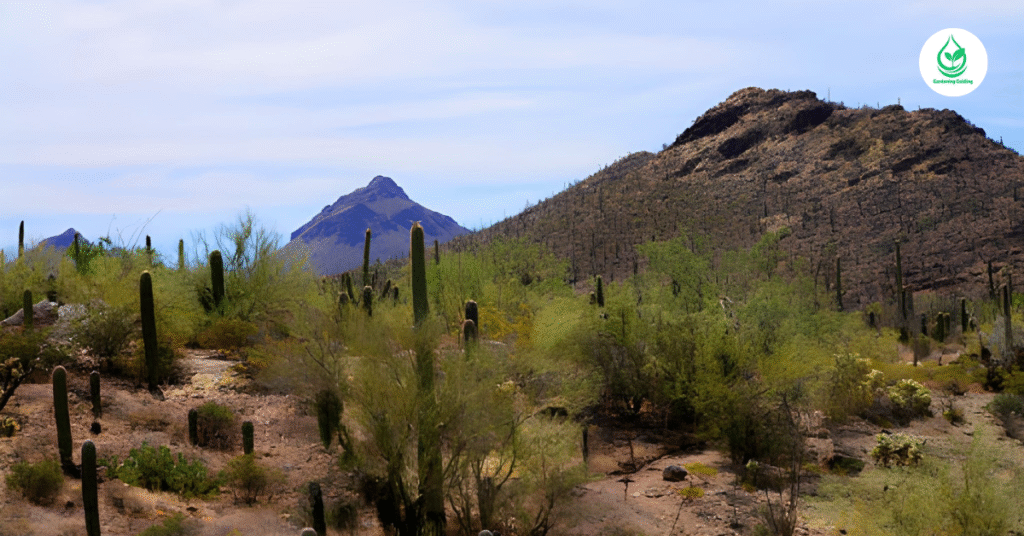
1. The Saguaro’s Unique Growth Journey
Seed to Sprout: A Battle for Survival
A Saguaro’s life begins in the harsh desert soil, often under the protective shade of a nurse plant such as a Palo Verde or Mesquite tree. These tiny seeds, smaller than grains of sand, need rare and perfect conditions to sprout—usually after summer rains. Only a few out of millions survive the scorching sun and limited moisture.
Slow but Steady Growth
During its first decade, a Saguaro grows only a few inches tall, conserving water and energy. Its slow growth helps it adapt to unpredictable desert climates. By the time it reaches 75 years old, it may begin to produce its first arm, marking maturity.
Lifespan and Legacy
With lifespans of 150–200 years, Saguaros witness generations of desert change. Their hollow remains even serve as shelter for animals after death—showing how their role continues long after life ends.
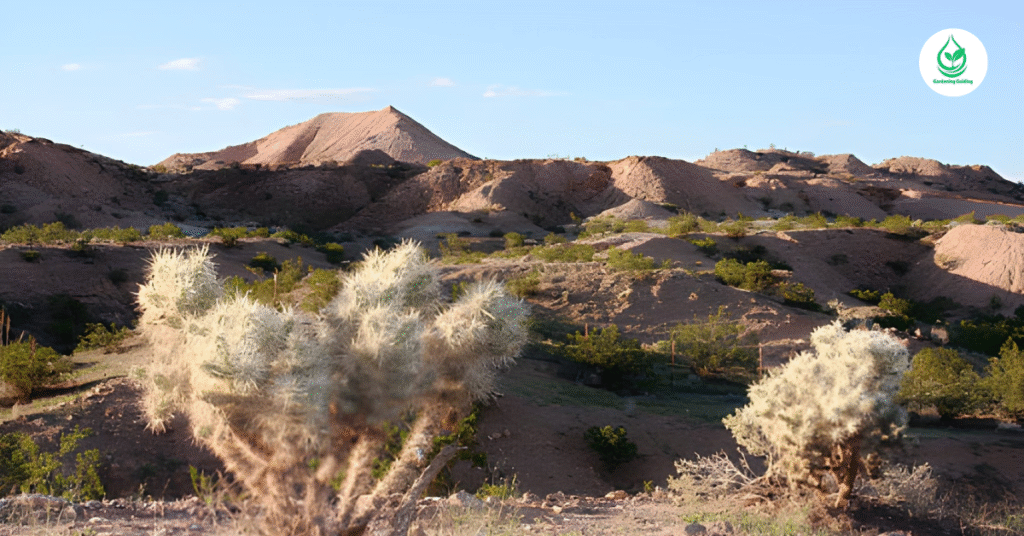
2. The Role of the Saguaro in Desert Ecosystems
Habitat for Wildlife
Saguaros are natural apartment complexes for desert animals. Birds such as Gila woodpeckers carve out nests in their thick flesh, and when they move out, owls and other species move in. Their fruits also nourish desert mammals, reptiles, and insects.
Pollination and Night Blooms
Saguaro flowers bloom at night, attracting bats and moths as pollinators. These nocturnal visitors are vital to reproduction, spreading pollen across great distances. Each bloom lasts less than 24 hours, making the process both delicate and extraordinary.
Water Storage and Desert Survival
The pleated body of the Saguaro allows it to expand and contract depending on water availability. A single cactus can hold up to 200 gallons of water after rainfall, sustaining life through months of drought.
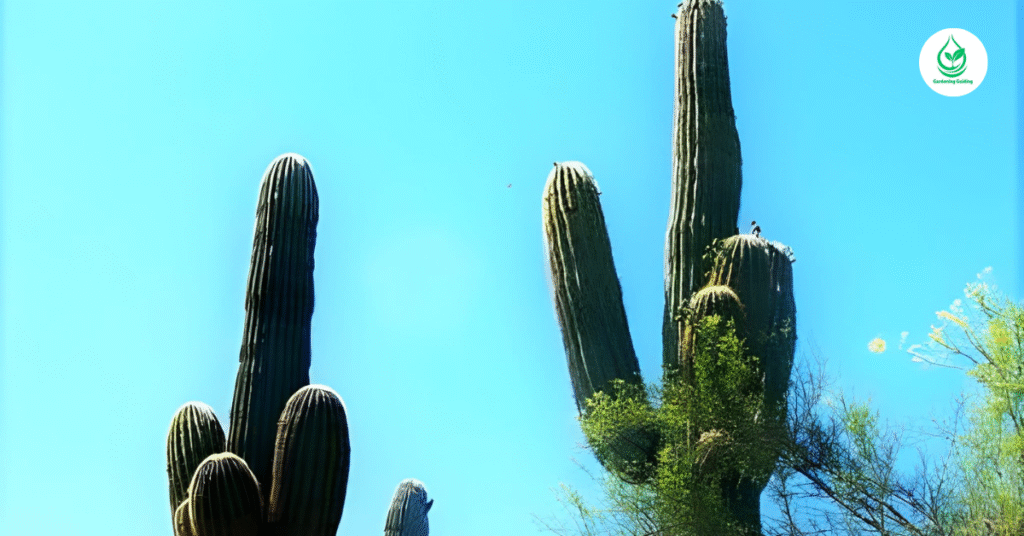
3. Cultural and Spiritual Significance
Native American Heritage
For the Tohono O’odham Nation, the Saguaro is sacred. They see it as a person of the desert—an ancestor that offers food, shelter, and wisdom. Each June, the tribe harvests the cactus’s fruit to make syrup and wine for ceremonies that honor the coming rains.
Symbol of the American Southwest
In popular culture, the Saguaro has become the symbol of Arizona and the greater Sonoran Desert. Its image appears in art, logos, and films, representing endurance and the beauty of desolation.
Spiritual Inspiration
Many modern plant enthusiasts view the Saguaro as a reminder of patience and strength—thriving despite the odds. Its form, reaching toward the sky, often symbolizes connection between earth and spirit.
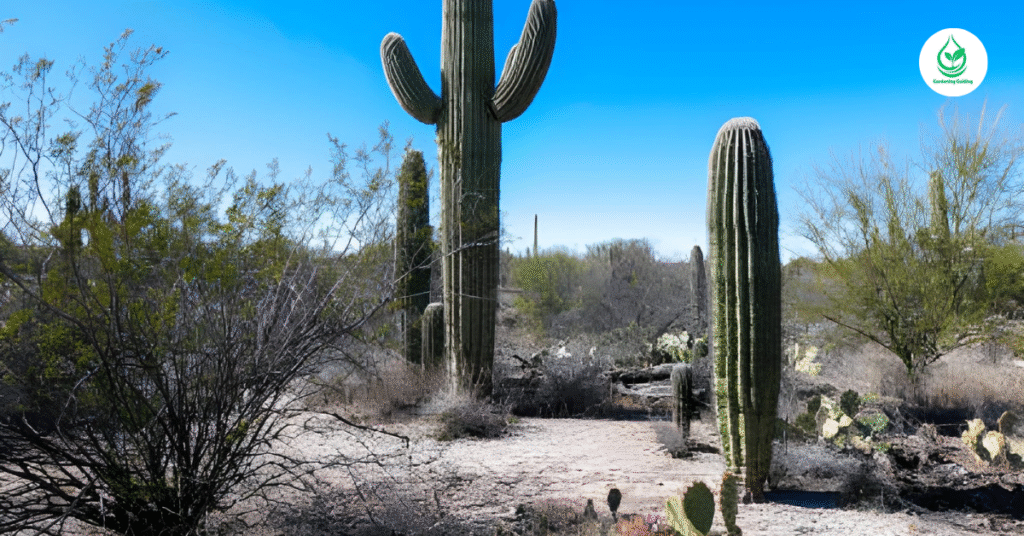
4. Growing and Caring for Saguaro Cacti at Home
Planting from Seeds or Small Specimens
While growing Saguaros at home is a challenge, it’s possible with patience. Most people start from small nursery plants rather than seeds, as seedlings are extremely delicate. They thrive best in sandy, well-draining soil and plenty of sunlight.
Watering and Sunlight Needs
Saguaros are desert survivors; overwatering is their biggest enemy. Water them deeply but infrequently, allowing the soil to dry completely between watering. Provide full sun exposure for at least six hours a day to mimic their natural desert environment.
Container and Indoor Growth Tips
If grown indoors or in containers, use cactus potting mix and ensure drainage holes are present. Rotate the plant occasionally for even sunlight exposure. As they grow tall, support them carefully and repot only when necessary.
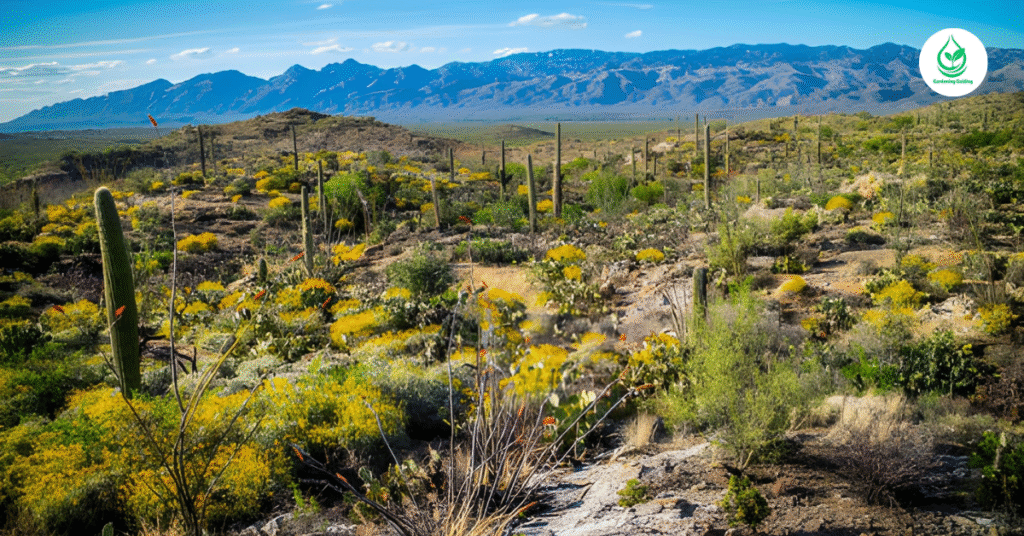
5. Threats and Conservation Efforts
Climate Change and Habitat Loss
Saguaros are facing new challenges due to global warming. Rising temperatures and less predictable rainfall patterns threaten young seedlings’ survival. Urban expansion near desert regions also reduces their natural habitat.
Illegal Harvesting and Cactus Theft
Sadly, some people illegally remove Saguaros from protected lands. These thefts harm ecosystems and are punishable by heavy fines and imprisonment. Conservation groups work tirelessly to monitor and protect natural populations.
Protection and National Parks
The Saguaro National Park in Arizona serves as a sanctuary for thousands of these iconic cacti. Scientists and volunteers monitor growth rates, replant young Saguaros, and educate the public about their ecological and cultural value.
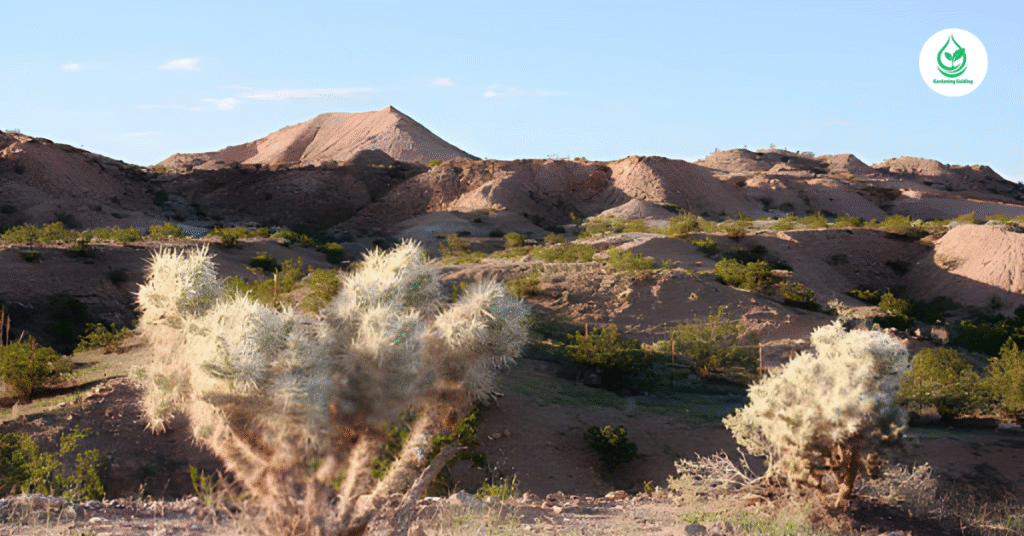
6. The Saguaro in Art and Modern Life
Symbol in Art and Media
The image of the Saguaro appears in countless artworks, paintings, and films symbolizing the American West. Artists use its silhouette to express solitude, survival, and timeless beauty.
Inspiration for Home Décor
Miniature Saguaro-themed decorations, prints, and even small cacti inspire modern interior designs. These décor pieces bring a touch of desert serenity into homes and offices.
Eco-Tourism and Education
Travelers from all over the world visit Arizona’s deserts to witness these giants in person. Eco-tourism initiatives encourage responsible exploration, connecting people with the desert’s fragile beauty and teaching about sustainability.
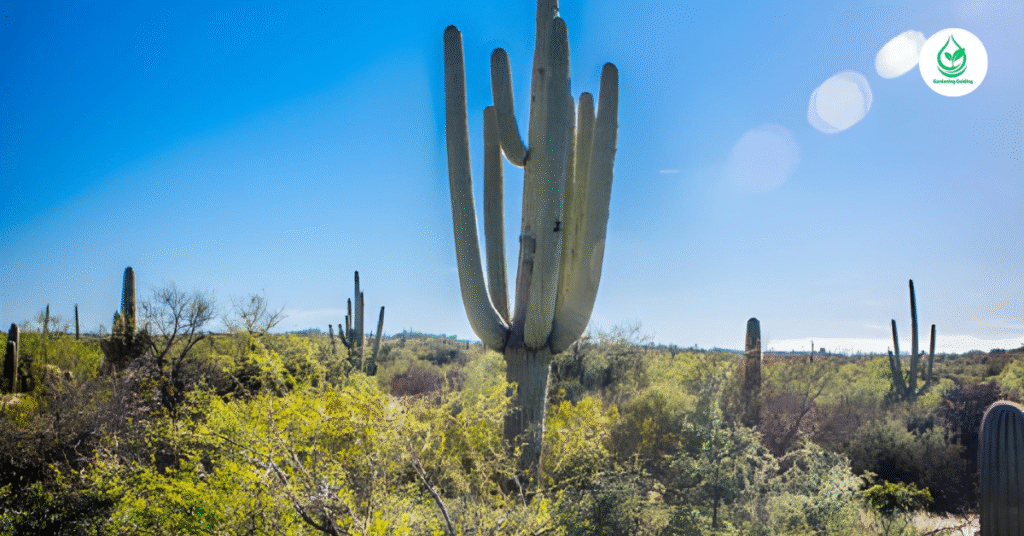
The Complete Guide to Understanding and Appreciating the Saguaro
Comparison Table: Saguaro vs Other Desert Cacti
| Feature | Saguaro (Carnegiea gigantea) | Organ Pipe Cactus | Prickly Pear Cactus | Barrel Cactus |
| Height | Up to 40 feet | 20 feet | 6–8 feet | 3–6 feet |
| Lifespan | 150–200 years | 100–150 years | 20–30 years | 50–100 years |
| Arms/Branches | Multiple upward arms | Clusters of pipes | Flat pads | None |
| Habitat | Sonoran Desert | Mexico & Arizona | Across deserts | Throughout Southwest |
| Flowering Season | May–June | April–June | March–May | April–June |
| Pollinators | Bats, bees, birds | Bats & bees | Bees, insects | Bees, birds |
| Water Storage | Very high (200 gallons) | Moderate | Low | High |
| Symbolism | Longevity, strength, endurance | Unity & community | Flexibility & healing | Protection & balance |
This table highlights why the Saguaro stands as the true king of cacti—a unique combination of endurance, size, and ecological purpose unmatched by others.
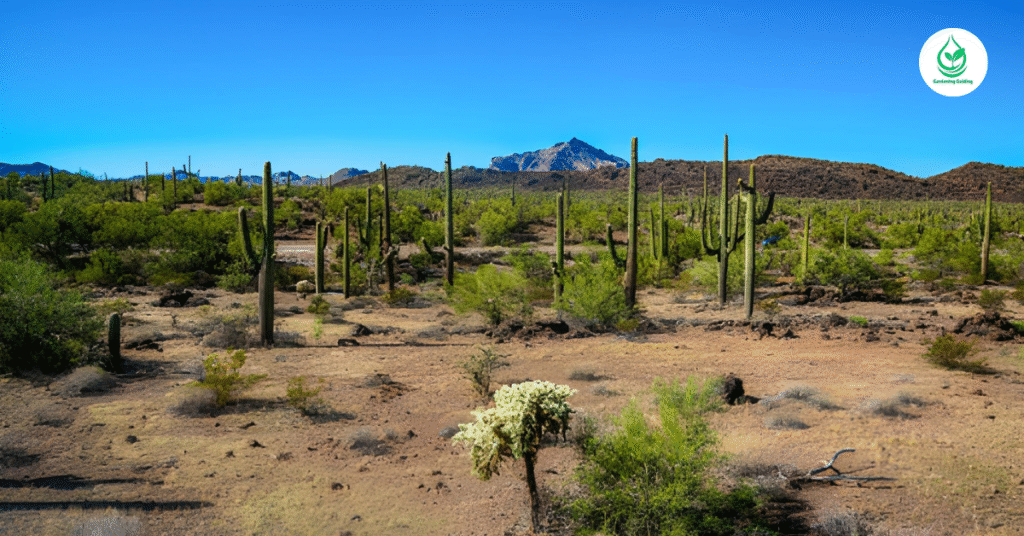
5 Pros of the Saguaro
- Exceptional Longevity – A Saguaro can live up to two centuries, making it a long-lasting part of any natural landscape.
- Ecosystem Support – It provides shelter and food for dozens of desert species.
- Low Maintenance – Once established, it needs minimal watering and care.
- Cultural Value – Deeply symbolic in Native American and Southwestern traditions.
- Natural Beauty – Its towering arms and silhouette add dramatic visual appeal to desert vistas.
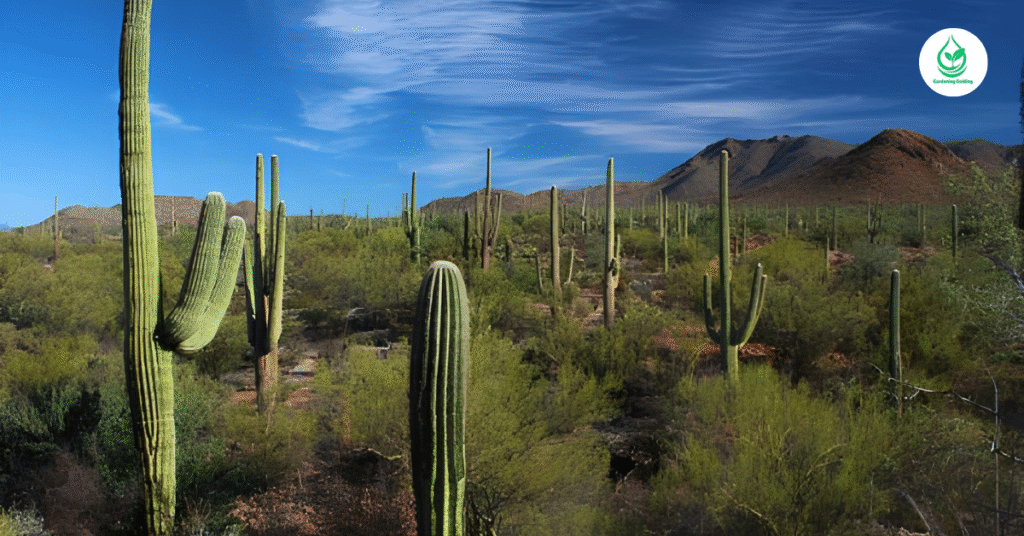
5 Cons of the Saguaro
- Slow Growth Rate – Takes decades to mature, which can be discouraging for growers.
- Sensitive to Cold – Cannot tolerate frost or freezing temperatures.
- Difficult to Transplant – Its massive root system makes moving mature plants nearly impossible.
- Protected by Law – Requires permits for removal or relocation, limiting flexibility.
- Limited Geographic Range – Only thrives naturally in the Sonoran Desert environment.
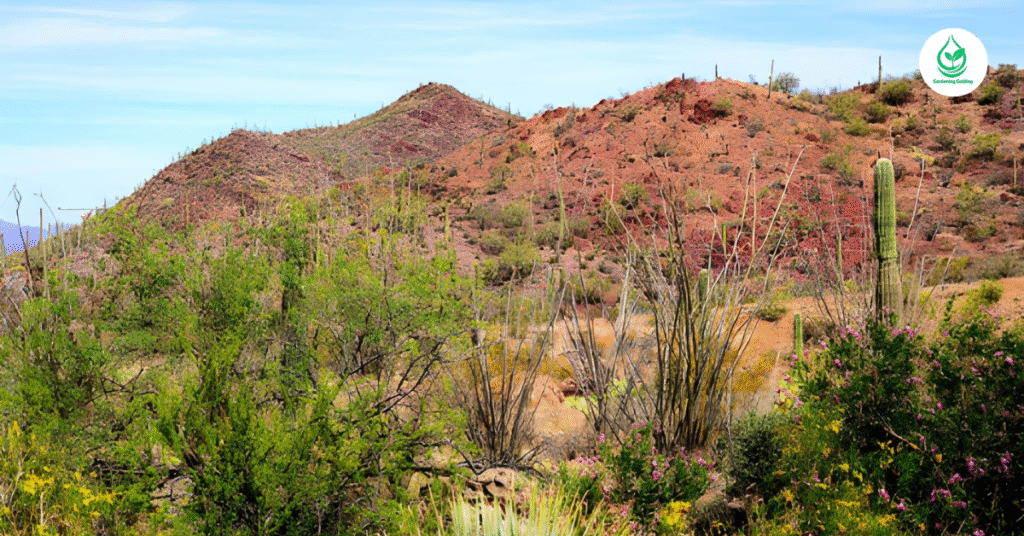
10 Frequently Asked Questions (FAQs)
1. How long does a Saguaro take to grow an arm?
Usually between 50 and 75 years. Arms grow only after the plant has stored enough energy and water.
2. Can I grow a Saguaro indoors?
Yes, but only when it’s young. Mature Saguaros need full sunlight and open space, which indoor environments can’t provide.
3. How much water does a Saguaro need?
Very little. Water every 3–4 weeks during hot months, and not at all in winter.
4. What is the white waxy coating on the Saguaro’s skin?
It’s a natural sunblock that prevents dehydration and damage from intense desert sunlight.
5. Do all Saguaros grow arms?
Not necessarily. Some live their entire lives without producing a single arm, depending on water availability and environment.
6. Why are Saguaros important to wildlife?
They provide nesting sites for birds, food through their fruit, and moisture during dry periods.
7. How do Saguaros reproduce?
Through pollination of their flowers—primarily by bats, bees, and birds—which leads to fruit containing thousands of tiny seeds.
8. Can Saguaros survive without direct sunlight?
No. Sunlight is crucial for photosynthesis and water regulation; shade weakens the plant.
9. What happens if a Saguaro is damaged?
Minor wounds can heal, but large injuries often attract bacteria or fungi that cause internal rot.
10. Are Saguaros protected by law?
Yes. In Arizona, harming or removing a Saguaro without a permit is illegal and can result in severe penalties.
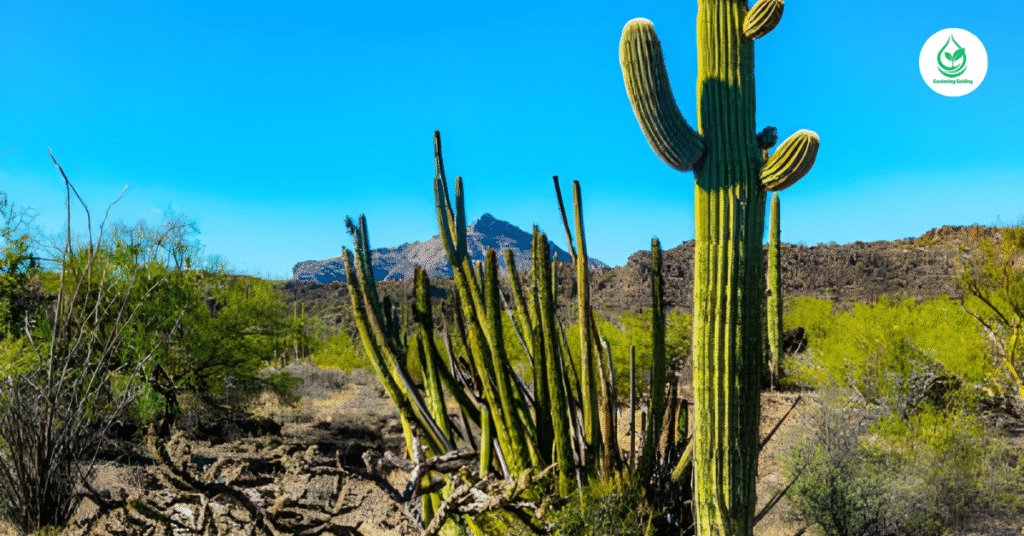
Conclusion
The Saguaro cactus is more than a desert plant—it’s a living legend of endurance, beauty, and cultural importance. From its slow rise under the harsh desert sun to its towering maturity, each Saguaro tells a story of resilience. Its arms reach upward, not just seeking sunlight, but symbolizing life’s strength and patience. Whether admired in nature or grown carefully at home, the Saguaro remains one of the most magnificent examples of how life adapts, survives, and thrives against all odds.
As climate challenges grow, protecting these natural giants becomes a shared duty. Understanding the 6 Saguaro concepts—its growth, habitat, symbolism, care, threats, and modern value—helps us not only appreciate but also preserve this wonder for generations to come.

